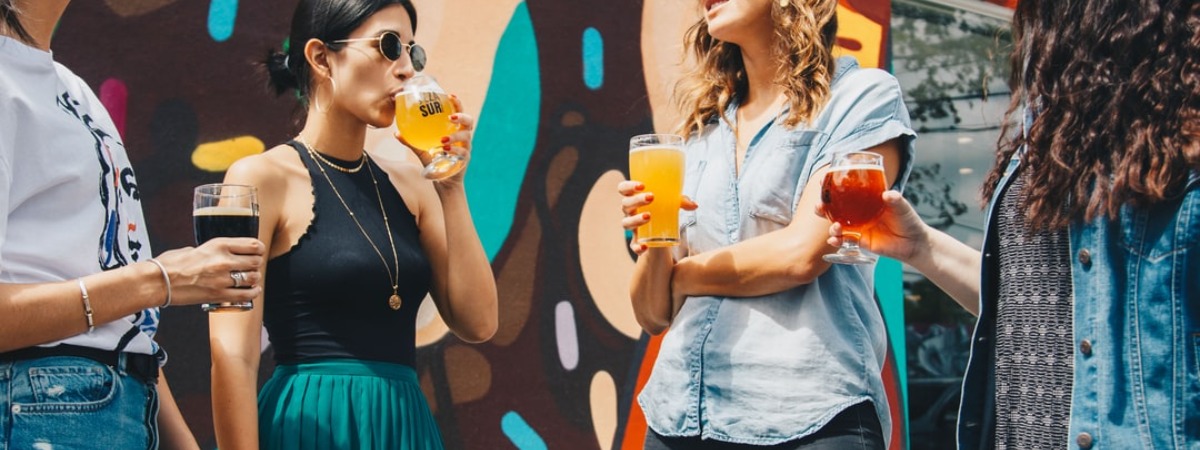Summer is here, and with it will come more opportunities for sitting outside and enjoying a nice, cold beer. If you’re a homebrewer, you probably already have some summer beer recipes in mind, and you may already have some fermenting or ready to bottle. Whatever the case may be, we are here to help you create the perfect summer beer. With our digital hydrometer, temperature probe, and innovative app, you can keep track of exactly how far along your beer is, and when it’s ready to go into the keg or the bottle.
In this post, we’ll look at some summer beer varieties that you can try this year!
Contents
IPAs
We know, you may be getting tired of all the IPAs that you’ve seen at bars and liquor stores in your area, but the fact remains that they’re still one of the most popular summer beers out there. If you like them, then brewing one of your own should be a welcome challenge. If you want, shoot for session IPA that has a lower alcohol content and that balances the hoppiness and bitterness that is found in most traditional IPAs.
Blondes
A blonde ale may have been your introduction to craft beer all those years ago, and with their moderate flavors and low alcohol content, they’re very accessible for casual beer drinkers. There are plenty of blonde varieties out there, and you can make yours with more hops or more spices, and create a unique beer that you can still sip easily while you sit on the front porch this summer.
Saisons
We talked about saisons in a previous post, and if you started brewing one this spring, then it’s likely ready to go for summer. The spicy and fruity flavors of traditional saisons can be perfect for summer, and you’ll love pouring one into an ice-cold glass after you finish mowing the yard on a hot July afternoon.
Shandies
There are many pre-mixed shandy beers out there, but it’s fairly easy to make your own by mixing your homebrewed summer ale with lemon, lime, or another fruit-based beverage. You can use traditional lemonade, but the result could be a beer that’s too sweet for your tastes. You can also use ginger ale to give your beer more bite and to take the edge off of the sweetness.
These four beer styles are just a handful of the options you can try this summer. With the right approach, you can create the perfect summer beer, and you’ll be able to spend the next three months sharing it with friends and family. Whether you’re hosting a barbecue or relaxing after a hard day’s work, you’ll have a great beer on hand at all times. If you have our digital hydrometer and other homebrew equipment, you’ll know exactly how far along your beer is in the brewing process, and when it’s ready to be bottled and shared.
What’s Your Favorite Flavor of Beer?
Describing a beer flavor can be tricky, especially when it comes to homebrews and craft beer. We’re here to help you create the perfect homebrewed beer, no matter if you’re just starting out in your new workspace, or you’ve been brewing in your basement for years.
When it comes to flavor, there are many words that can be used, and you likely know which flavors (and which words) that you prefer. In this post, we’ll look at some of the most popular!
Bright and Hoppy
When someone calls a beer “bright,” they’re not necessarily referring to the beer’s intelligence. A bright beer is a brew that’s been made to be clear during the filtration and maturation process. Once the beer is carbonated, it’s bottled from the bright tank and is ready to store or serve. The flavor of a bright beer can be citrusy or hoppy, and leaves your taste buds feeling clean after you drink it.
Dark and Toasty
There are many people out there who prefer darker beers, such as stouts and porters. Porters tend to have a dry, fruity flavor, while stouts are often less sweet and have more of a creamy or toasty flavor. Guinness® is probably the world’s most famous stout beer, and if you want to recreate that dark, creamy flavor for your next homebrew, then you’ll need the right unmalted roasted barley.
We love seeing people across the country create new beers that contain their favorite flavors. If you’re starting a new batch soon, then think about what flavors you want the final product to have. Do you want bright, hoppy, and citrus flavors, or do you prefer dark, toasty, caramel-like flavors? The time of year can determine which flavor you prefer, but the fact of the matter is that a good beer is a good beer in any month.

